Cotton Puffs, Q-tips®, Smoke and Mirrors: The Drawings of Ed Ruscha

Introduction
The Los Angeles-based artist Ed Ruscha has been a major presence in the art world for more than forty years. Although initially identified with a Southern California variant of pop art, Ruscha's singular vision, deadpan humor, and focus on words have earned him a distinct place of his own. This first museum retrospective devoted to his drawings reveals that Ruscha works magic not only with words and images but also with media and techniques. The title of the exhibition, a quote from the artist, refers to some of his drawing tools (cotton puffs and Q-tips®) and his illusory effects (smoke and mirrors). Ruscha frequently uses cotton puffs to layer powdered graphite, gunpowder, or pastel onto his papers and Q-tips® for the finer touches.
Born in Omaha, Nebraska, in 1937, Ruscha grew up in Oklahoma before moving to Los Angeles in 1956. His ambition was to become a commercial artist, and over the next four years he studied at the Chouinard Art Institute (now CalArts), north of Los Angeles. He set out taking courses in photography and graphic design and did freelance work as well, first as a sign painter and later as a typesetter and pressman for an art book publisher. But at Chouinard, he became drawn to the fine arts. Of the switch, Ruscha explains, "I saw a reproduction in some obscure magazine of Jasper Johns' Target with Four Faces [1955] and [one of] Robert Rauschenberg's combine[s]....I knew from then on that I was going to be a fine artist."
The exhibition traces Ruscha's career from his early pop images of gas stations and Hollywood logos through his gunpowder "ribbon" drawings, luminous pastels, experiments with "stains" (coffee, vegetable juices, rose petals), and quirky phrases culled from the American vernacular. It concludes with works that incorporate shadowy silhouettes, oddly orientated maps of Los Angeles, and frames from films. Words are clearly Ruscha's prevailing medium for translating his vision. He gives them physical voice in a variety of scripts and styles—from gothic to longhand, from ribbonlike lettering to characters that seem poured rather than printed. Despite the formal precision of Ruscha's drawings, they nonetheless remain equivocal, evoking the "smoke and mirrors" of the magician's game.
Ed Ruscha, 1984, Photograph by Wayne Shimabukuro

Quit, 1967, gunpowder and colored pencil on paper, 57.15 x 72.39 cm (22 1/2 x 28 1/2 in.), Collection of Dana and Rick Dirickson © Ed Ruscha

City, 1967, powdered graphite on paper, 36.2 x 58.4 cm (14 1/4 x 23 in.), Private collection, Photograph by Paul Ruscha © Ed Ruscha

Worm, 1970, gunpowder and pastel on paper, 29.2 x 73.7 cm (11 1/2 x 29 in.), Collection of Susan G. Glesby, Photograph by Hester + Hardaway Photographers © Ed Ruscha

Lips, 1970, gunpowder and pastel on paper, 29.2 x 73.7 cm (11 1/2 x 29 in.), Collection of Byron R. Meyer © Ed Ruscha

Aspirins, 1971, gunpowder and pastel on paper, 29.2 x 73.7 cm (11 1/2 x 29 in.), Los Angeles County Museum of Art; gift of the Modern and Contemporary Art Council, Photograph © 2002 Museum Associates/LACMA © Ed Ruscha

Babycakes, 1971, gunpowder and pastel on paper, 29.4 x 73.7 cm (11 9/16 x 29 in.), The Museum of Fine Arts, Houston; museum purchase with funds provided by the National Endowment for the Arts with additional gifts of Mr. Roy S. O'Connor; Mr. and Mrs. Benjamin Kitchen III; Nina Cullinan; Mr. and Mrs. Nathan M. Avery; Mr. Carl Detering in honor of Phyllis Childs Detering; Carl Detering, Jr.; and Will Childs Detering; Mr. and Mrs. John C. Fitch; Alice McPherson, M.D.; and Joan H. Fleming, Photograph by Thomas R. DuBrock © Ed Ruscha
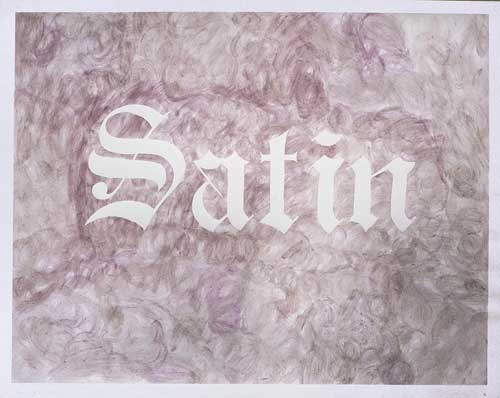
Satin, 1971, rose petal stain on paper, 58.4 x 73.7 cm (23 x 29 in.), Collection of Michel and Françoise Waelchli, Photograph by Paul Ruscha © Ed Ruscha
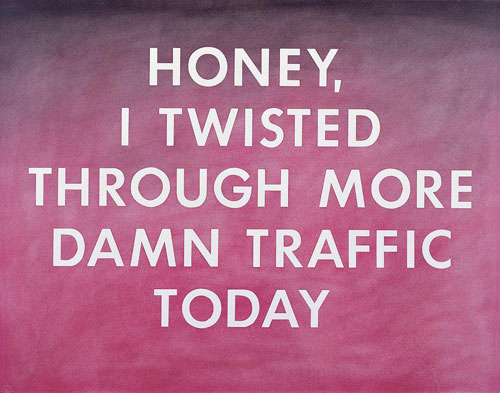
Honey, I Twisted Through More Damn Traffic Today, 1977, pastel on paper, 57.5 x 72.7 cm (22 5/8 x 28 5/8 in.), Collection of Susan Brundage, Photograph by Matt Flynn © Ed Ruscha
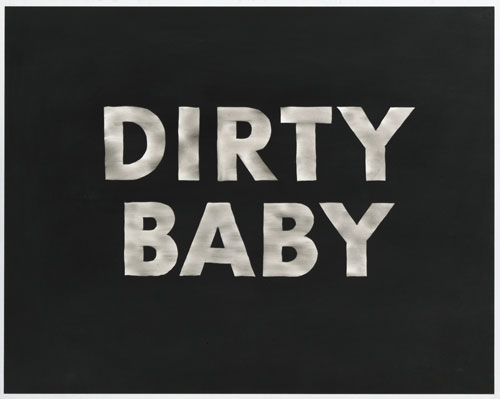
Dirty Baby, 1977, pastel on paper, 57.2 x 72.4 cm (22 1/2 x 28 1/2 in.), Courtesy Anthony d'Offay, London © Ed Ruscha
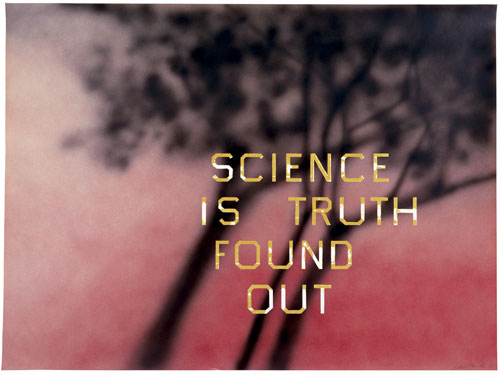
Science Is Truth Found Out, 1986, acrylic and dry pigment on paper, 74.9 x 101.6 cm (29 1/2 x 40 in.), Private collection, Photograph by Richard Shellabear, Rodney Todd-White and Son, London © Ed Ruscha
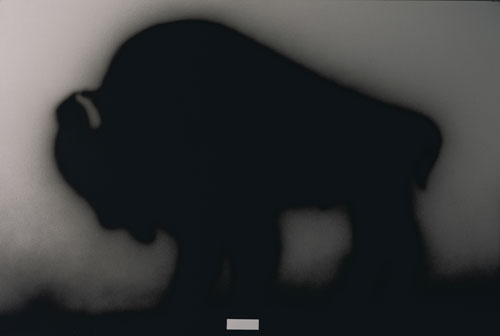
Bison Study #2, 1989, acrylic on paper, 68.6 x 102 cm (27 x 40 1/8 in.), Private collection, Photograph by Paul Ruscha © Ed Ruscha

Brave Man's Camera, 1996, acrylic on paper, 152.4 x 97.2 cm (60 1/8 x 38 1/8 in.), The J. Paul Getty Trust, Los Angeles, Photograph by Anthony Peres © Ed Ruscha

The End #23, 2002, acrylic and ink on paper, 61 x 76.2 cm (24 x 30 in.), On loan from The American Contemporary Art Foundation, Inc., Leonard A. Lauder, President, Photograph by Paul Ruscha © Ed Ruscha